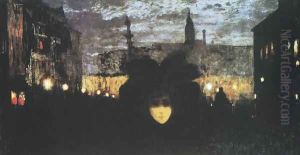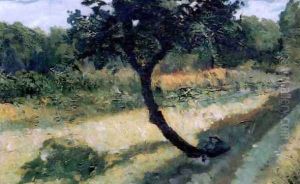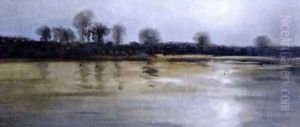Leon Kaufmann (Kamir) Paintings
Leon Kaufmann, also known as Leon Kamir, was a Polish-born French painter, graphic artist, and illustrator. Born in Krakow, Poland, in 1907, Kaufmann showed an early interest in art and was encouraged to pursue his passion. He studied at the Academy of Fine Arts in Krakow under the tutelage of renowned professors such as Józef Mehoffer and Władysław Jarocki, which provided him a solid foundation in the academic traditions of painting.
In the 1930s, Kaufmann moved to Paris, which was then the center of the avant-garde art world. There, he became part of the vibrant artistic community and was influenced by the various movements of the time, including Surrealism and Cubism. His work began to reflect a combination of these styles, marked by a distinctive use of color and form. Kaufmann's paintings often featured dreamlike scenes and fantastical imagery, which resonated with the Surrealist fascination with the unconscious mind.
Despite the outbreak of World War II and the subsequent Nazi occupation of Paris, Kaufmann continued to work and exhibit his art. His experiences during the war, particularly the threat posed to him as a Polish Jew, deeply affected him and his work. Following the war, Kaufmann's style evolved further, and he began to incorporate more abstract elements into his paintings.
Kaufmann's work gained recognition in France and internationally, and he participated in numerous exhibitions throughout his career. In addition to painting, he was also an accomplished graphic artist and illustrator, contributing to various publications and designing book covers. His illustrations often carried the same whimsical and surreal quality as his paintings.
Leon Kaufmann passed away in 1994, leaving behind a rich legacy of work that continues to be appreciated for its imaginative quality and its synthesis of different artistic movements. His contributions to art are remembered through his paintings, which are held in private collections and museums around the world.


